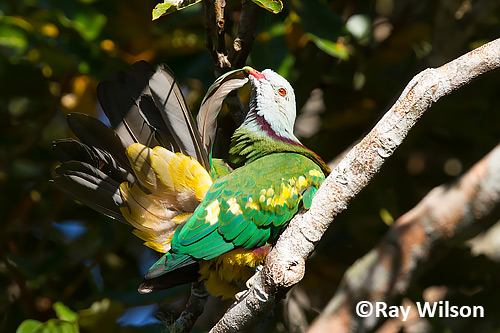
- Home
- Photography Tours
- Diary / Blog
- Galleries
- Foreign Trips
- Tasmania 2016
- NE Queensland 2016
- Western Alps 2016
- NE Spain 2016
- Australia's Wet Tropics 2015
- Australia's Top End 2015
- SW Australia 2015
- Switzerland 2015
- Andalucia 2015
- Belize 2015
- Australia 2014
- Switzerland 2014
- Belize 2014
- Bahama Islands 2014
- Switzerland 2013
- Ecuador 2012-2013
- Florida 2011-2012
- Vancouver Island 2011
- Australia 2010
- Peru 2008
- Bulgaria 2007
- Lesvos 2006
- California 2006
- New Zealand 2005
- Extremadura 2005
- Goa, India 2004
- The Gambia 2003
- About
September 2014
1st-8th September 2014
Atherton Tablelands, Queensland, Australia
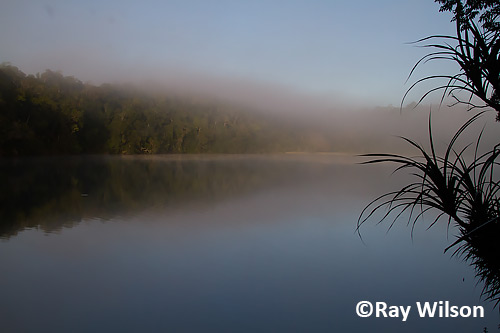
Lake Eacham on a misty morning
The Atherton Tablelands lie about a 90 minute drive to the west of Cairns and there are a host of excellent birding spots in the area. Historically, the landscape here was mostly covered with dense tropical rainforest, but sadly the massive over-exploitation of the early European settlers rapidly reduced that and now only 5% of the original rainforest remains in fragmented clumps.
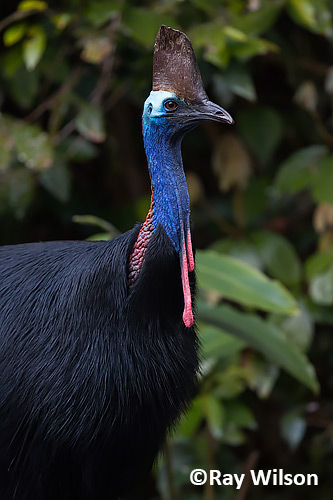 female |
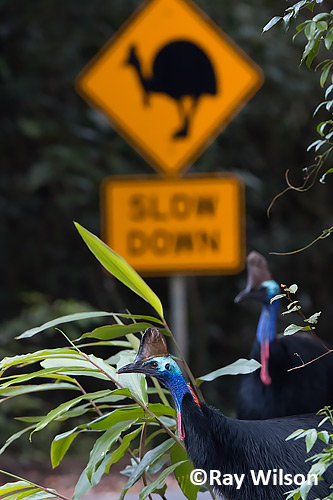 male (front) & female (behind) |
Southern Cassowary (Casuarius casuarius)
The rainforests of northern Queensland are home to one of the most iconic, and elusive birds of Australia: the Southern Cassowary. Adult birds can be as tall as 1.75m (6ft) and females can weigh as much as 58kg (128lbs). The aggresive parental instincts of the males who reputedly have the potential to be able to disembowel a man with a single kick, has gained them a reputation as being potentially lethal animals. However, if you exhibit a little bit of common sense there is in reality little danger and although the birds may approach very close at times, they will generally either ignore you or exhibit nothing more than mild curiosity in your presence before disappearing silently back into the forest.
If you unlucky enough to encounter an aggresive male, the important thing is to remember to stay still. Running away or making any sudden movements will greatly increase the chance of you being attacked. If the aggressive behaviour persists, raise your arms and hold any long object that is to hand above your head to make yourself look as tall as possible. By presenting a profile that is taller than the attacking bird and standing your ground, it will usually back off.
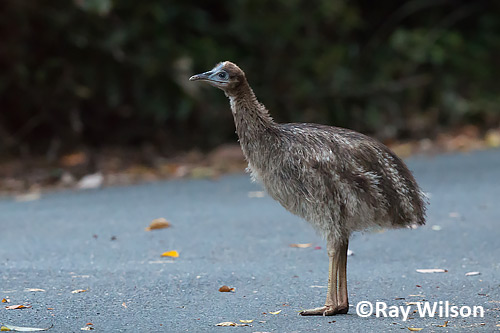
Southern Cassowary (Casuarius casuarius) chick
As with most ratites, Cassowary parental duties are performed entirely by the male with the female usually departing to search for another male soon after laying her eggs.
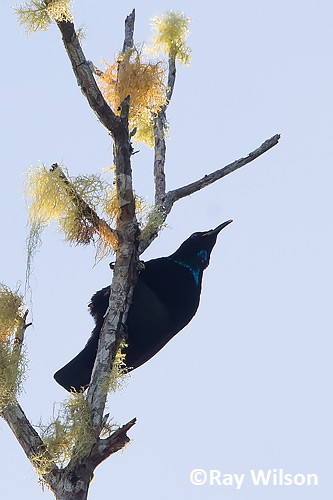
male Victoria's Riflebird (Ptilorus victoriae) |
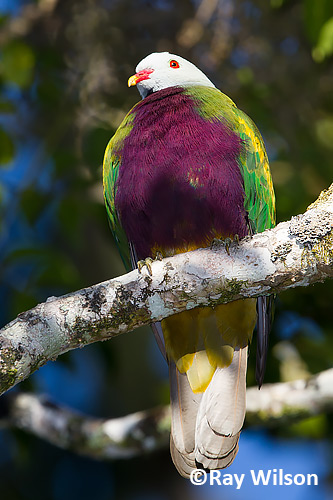
Wompoo Fruit-dove (Ptilinopus magnificus) |
As mentioned in a previous post, immature male Victoria's Riflebirds are identical to females and it takes them 7 years to attain their full breeding plumage, making adult males in their resplendent breeding plumage a relatively rare sight. I was lucky enough to see 2 of them during my stay in northern Queensland, but unfortunately they both stayed quite high in the canopy making it very difficult to get a decent photo of them.
I was far more fortunate with my encounters with the spectacularly colourful, but often elusive, Wompoo Fruit-doves and had several prolonged encounters at pretty close range. The individuals in the photos above and below were part of a group of 6 that I watched for almost an hour as they gorged themselves on palm fruits and preening their feathers on a neighbouring.
Wompoo Fruit-dove (Ptilinopus magnificus)
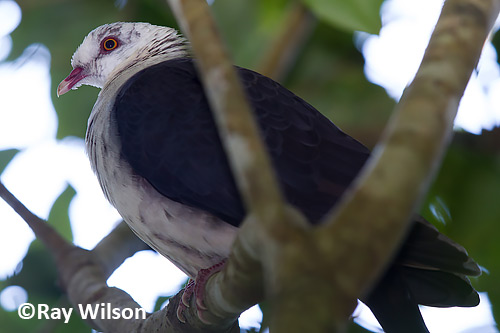
White-headed Pigeon (Columba leucomela)
Spotted Catbirds are more often heard than seen, with their beautiful green plumage blending in perfectly with the foliage of the trees in the dense rainforests it inhabits. Their yowling, cat-like calls can most often be heard at dawn and dusk.
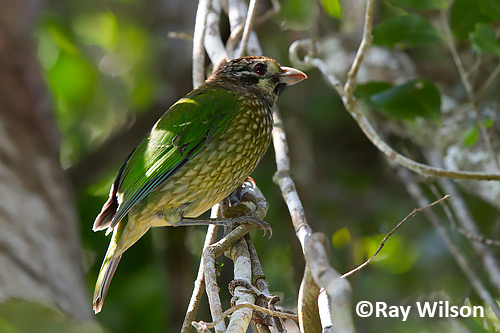
Spotted Catbird (Ailuroedus melanotis)
Scarlet Honeyeater is one of the most colourful members of its family, and it is fairly common in the tablelands where it can usually be found feeding on the nectar of flowering trees and bushes, such as this grevillea.
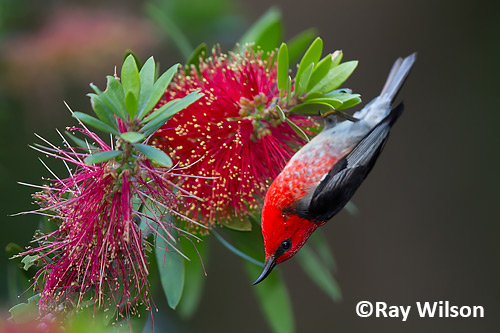
Scarlet Honeyeater (Myzomela sanguinolenta)
You may have read in the first of my Australian updates that Brush-turkeys were not particularly easy to photograph due to the lighting conditions on the forest floor. Well, those were my experiences in Cairns but it is certainly not the case in the Tablelands, where they are commonly seen scrounging around the parking lots of virtually every bit of parkland you come across.
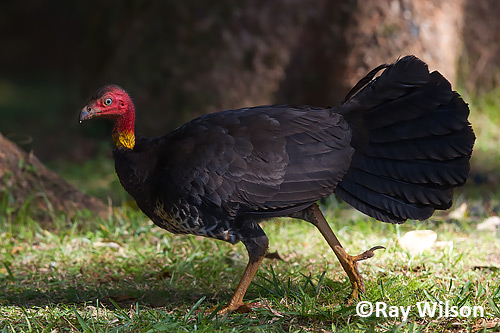
Australian Brush-turkey (Alectura lathami)
Yellow Mahogany and several other rainforest trees, including several species of fig (Ficus spp.) sprout flowers directly from their trunks and branches, a type of flowering known as cauliflory.
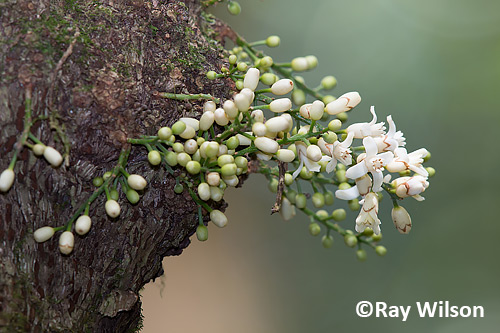
Yellow Mahogany (Dysoxylum parasiticum)
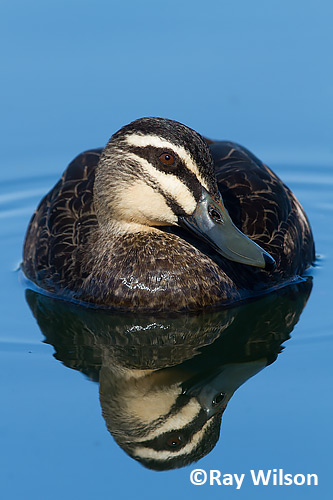
Pacific Duck (Anas superciliosa) |
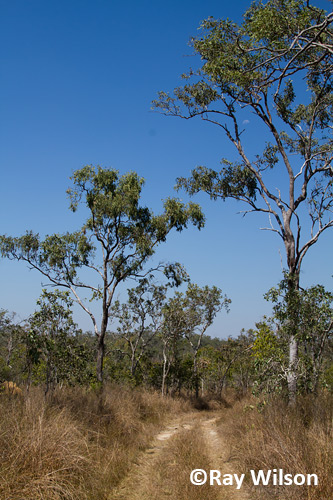
A typical track through the open forests of the dry country |
Away from the rainforests, areas of dry country woodlands host a totally different range of species to those found in the rainforests, such as Scaly-breasted Lorikeets and Fuscous Honeyeaters.
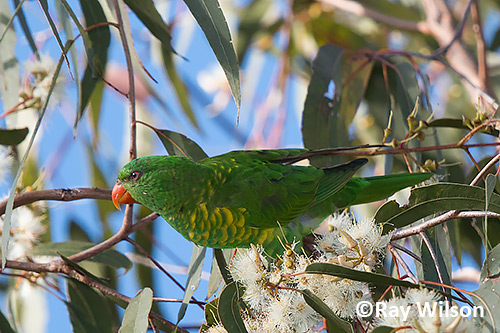
Scaly-breasted Lorikeet (Trichoglossus chlorolepidotus)
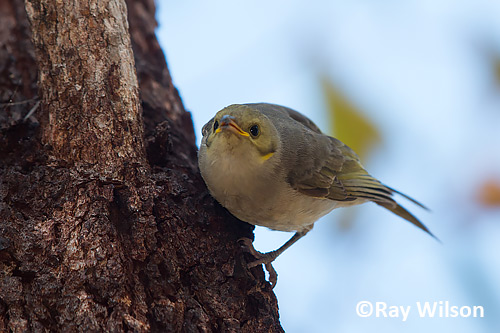
Fuscous Honeyeater (Lichenostomus fuscus)
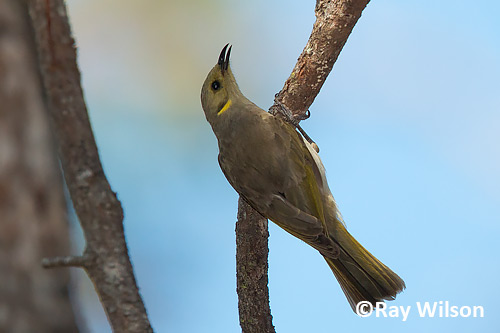
Fuscous Honeyeater (Lichenostomus fuscus)
Red-backed Fairywrens are common in the scrubby understorey of open, dry, Eucalyptus forests although they can be fairly unobtrusive as they quietly forage close to the ground in dense vegetation. With their striking black and red plumage the males are totally unmistakable.
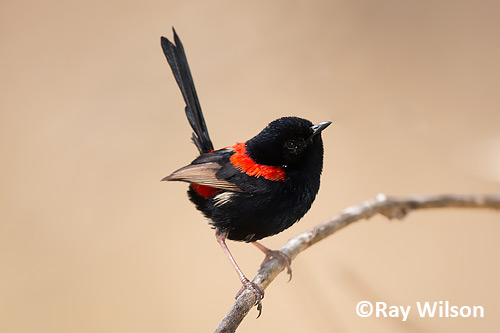
male Red-backed Fairywren (Malurus melanocephalus)
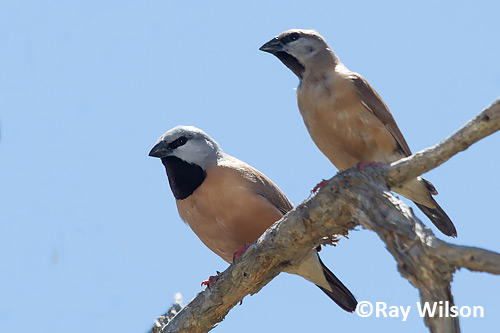
Black-throated Finches (Poephila personata)
Black-throated Finches are scarce in the Tablelands but small flocks can be found in the Pandanus woodlands at Mareeba Wetlands.
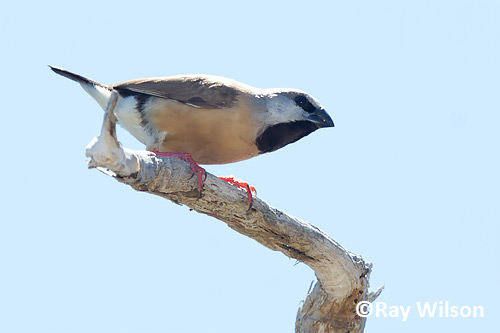
Black-throated Finch (Poephila personata)
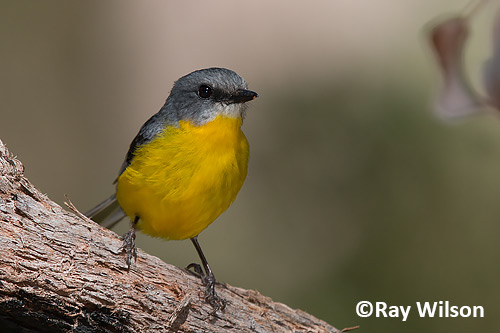
Eastern Yellow Robin (Eopsaltria australis)
The small snake below (ca. 75cm) was found hunting among the rocks on an almost dry riverbed. Unfortunately, I know very little about the identification of Australian snakes and have been unable to find anything that matches it in my copy of Wilson & Swan.
23/11/2014 update: I've finally managed to work out the identity of the reptile below. The reason I couldn't previously find it in Wilson and Swan's book is that I was looking in the wrong place! It is a leg-less lizard, not a snake.
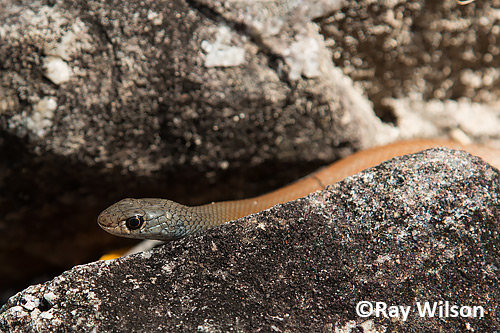
Common Scaly-foot (Pygopus lepidopodus)
Small groups of cranes (both Brolgas and Sarus Cranes) feeding in the fields around the Tablelands are a common sight during the day, although they are usually quite distant. At dusk, however, they are far more predictable and watching them coming into roost at either Hasties or Bromfield Swamps can be a spectacular experience.
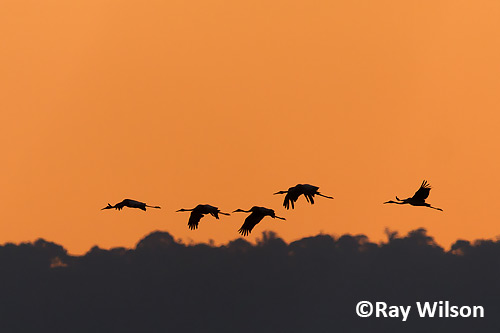
Brolgas (Grus rubicundus)
Ray Wilson owns the copyright of all images on this site.
They may not be used or copied in any form without prior written permission.
raywilsonphotography@googlemail.com
